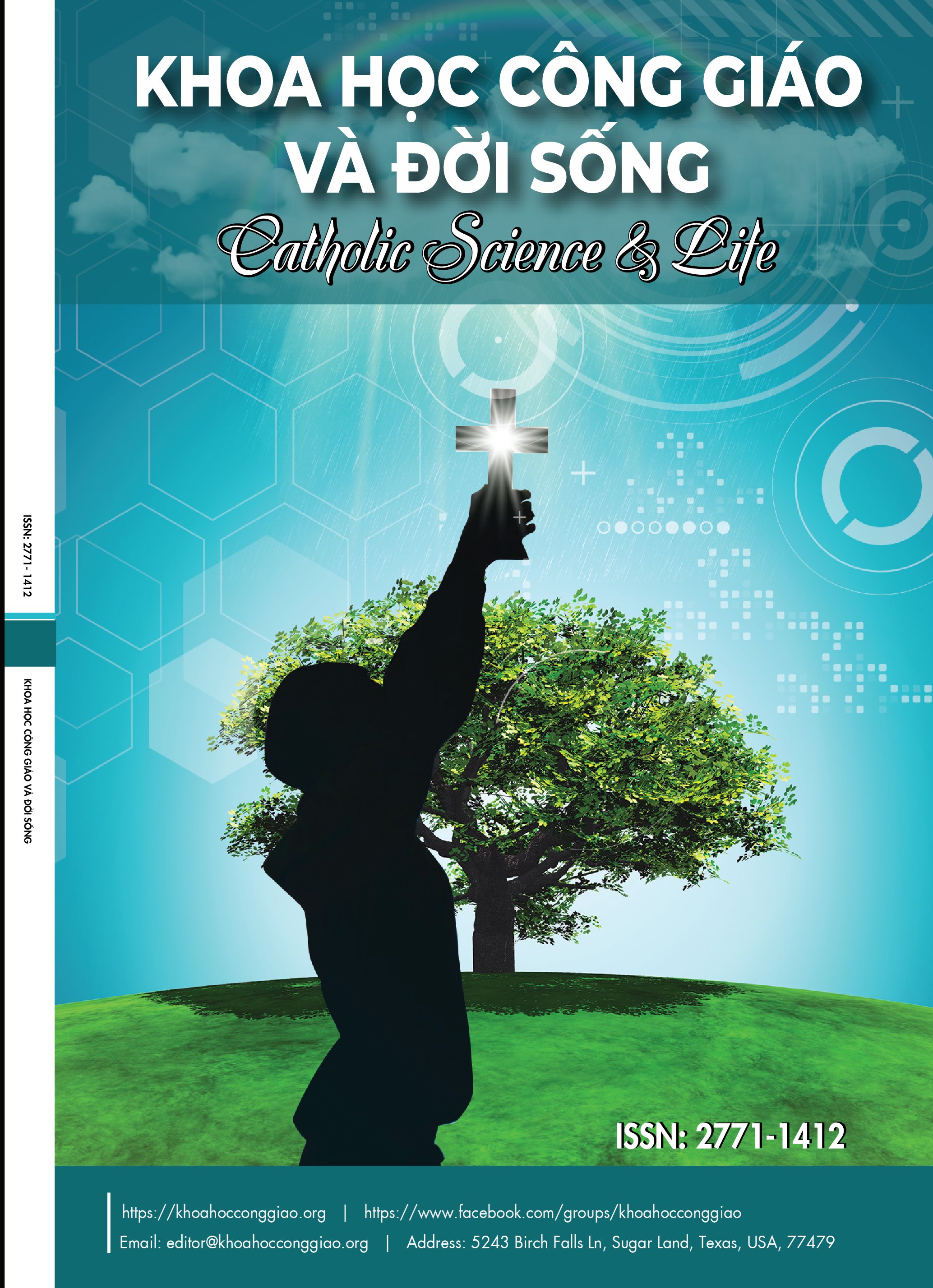Vắn Đàm giữa Tôn Giáo Dân Gian Cổ Xưa ở Đông Á với Ki-Tô Giáo: Một Bước Quy Nội về Chính Đức Tin Ki-Tô Giáo
Dialogue between Ancient Indigenous Religions in East Asia and Christianity: A Step Inward towards the Core Beliefs of Christianity
DOI:
https://doi.org/10.54855/csl.23326Từ khóa:
Tôn giáo Đông Á, Kitô Giáo, đối thoại, thờ cúng tổ tiên, bói toánTóm tắt
Trong cuộc đàm thoại vắn gọn về tôn giáo dân gian Đông Á, trước hết chúng tôi sẽ tiếp cận tôn giáo dân gian cổ xưa ở Đông Á hay Trung Hoa qua trình bày của Julia Ching, sau đó đứng trong góc nhìn đối thoại của Hans Küng giữa tôn giáo này với Ki-tô giáo, tiếp đến là phần nêu lên những nhận định khác có liên quan để đào sâu và mở rộng vấn đề. Tôn giáo dân gian cổ xưa ở Đông Á, tiêu biểu là ở Trung Hoa, mang nét đặc trưng về thờ cúng tổ tiên, cúng tế và bói toán. Cơ sở nền của những thực hành này là người ta tin rằng linh hồn các tiền nhân có hiện diện, tức là có một ‘đời sống’ hay thế giới nào đó sau cái chết. Hơn nữa, người ta có thể “nói chuyện” với thế giới ấy để xin được che chở, bảo vệ hoặc biết trước tương lai để tránh vận rủi tìm vận may. Ki-tô giáo có điểm chung là niềm tin vào sự sống đời sau. Tuy nhiên, khác biệt lớn nhất là không một điều gì phát xuất từ con người có thể thay thế Đấng Tuyệt Đối trong vai trò che chở, bảo vệ hay chúc lành cho con người. Linh hồn tiền nhân có hiện diện và được thờ kính theo nghĩa được kính nhớ, yêu mến và được con cháu cầu nguyện xin Thiên Chúa ban ơn cho các vị ấy, chứ không phải được thờ theo nghĩa thờ Thiên Chúa. Theo nghĩa này, Ki-tô giáo không đánh mất căn tính và cũng không quá cứng nhắc khi đối thoại để gieo hạt mầm đức tin vào văn hóa Đông Á. Đối thoại không chỉ để truyền giáo, nhưng để hiểu sâu hơn và sống căn tính đức tin của mình một cách thực tế hơn trong môi trường văn hóa khác với văn hóa đã bắt nguồn nên Ki-tô giáo. Đối thoại ấy là một cuộc ra đi để trở về sâu hơn với nguồn cội.
Abstract
In a concise dialogue about indigenous religions in East Asia, we will first approach the ancient indigenous religions in East Asia or China through the presentation of Julia Ching. Then, we will take a perspective from Hans Küng's dialogue between these religions and Christianity, followed by presenting other related perspectives to delve deeper into the topic.Ancient indigenous religions in East Asia, particularly in China, are characterized by ancestor worship, ritual ceremonies, and divination practices. The foundation of these practices is the belief that the souls of ancestors are present, meaning there is an afterlife or another world after death. Furthermore, people can "communicate" with this world to seek protection, blessings, or foreknowledge to avoid misfortune and find fortune. Christianity shares a common belief in an afterlife. However, the significant difference lies in the fact that nothing originating from humans can replace the role of the Absolute in providing protection, blessings, or benevolence. The souls of ancestors are present and venerated in the sense of being remembered, loved, and prayed for, asking God for grace for them, rather than being worshipped as gods. In this sense, Christianity does not lose its essence and is not excessively rigid in dialogue, aiming to sow the seeds of faith in East Asian cultures. The dialogue is not only for evangelization but also to understand more deeply and live the essence of faith in a more practical way within a cultural environment different from the culture in which Christianity originated. This dialogue is a journey to return to the roots in a deeper sense.
Tài liệu tham khảo
Hans Küng - Julia Ching (1989). Christianity and Chinese Religions. New York: Doubleday.
James L. Fredericks (1999). Faith among Faiths. New York: Paulist Press.
Paul F. Knitter (2002). Theologies of Religions. New York: Orbis Books.
Peter C. Phan (2004). Being Religious Interreligiously. New York: Orbis Books.
Tải xuống
Đã Xuất bản
Số
Chuyên mục
Giấy phép
Bản quyền (c) 2023 Phêrô Nguyễn Phúc Hoàng Dũng, S.J.

Tác phẩm này được cấp phép theo Giấy phép quốc tế Creative Commons Attribution-NonCommercial 4.0 .
Authors retain copyright and grant the journal the right of first publication with the work simultaneously licensed under a Creative Commons Attribution 4.0 International License that allows others to share the work with an acknowledgment of the work's authorship and initial publication in this journal.
Authors are able to enter into separate, additional contractual arrangements for the non-exclusive distribution of the journal's published version of the work (e.g., post it to an institutional repository, in a journal or publish it in a book), with an acknowledgment of its initial publication in this journal.













